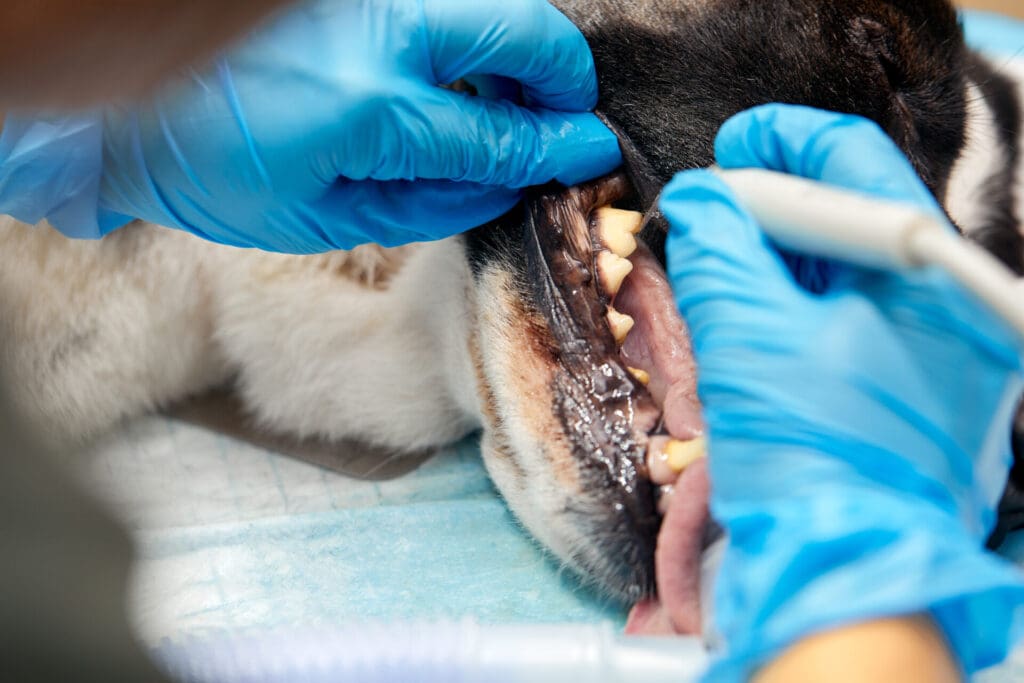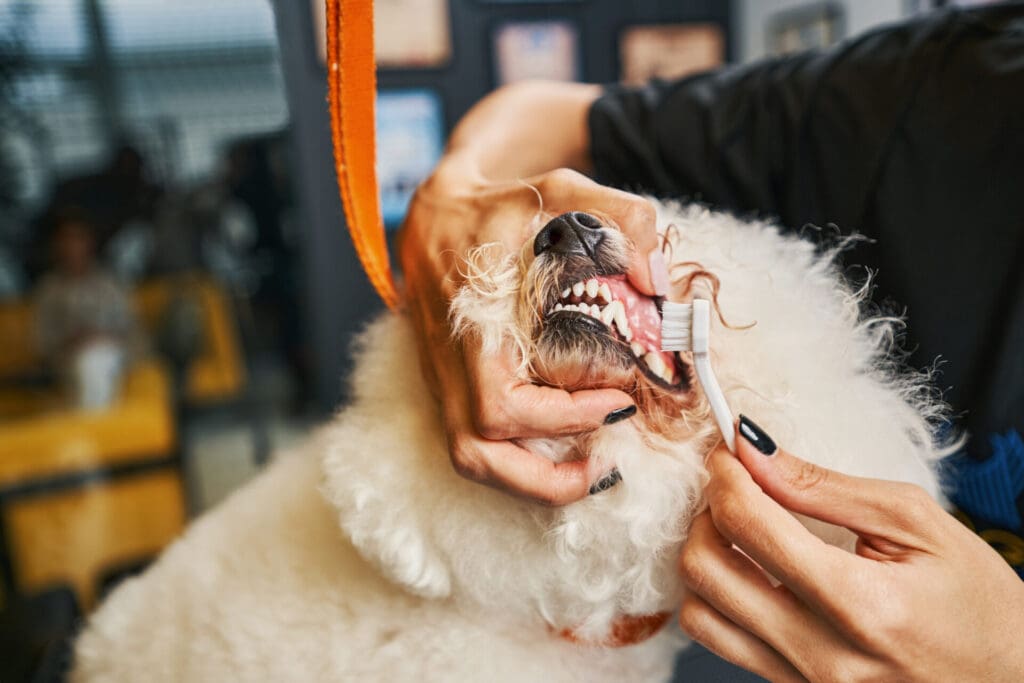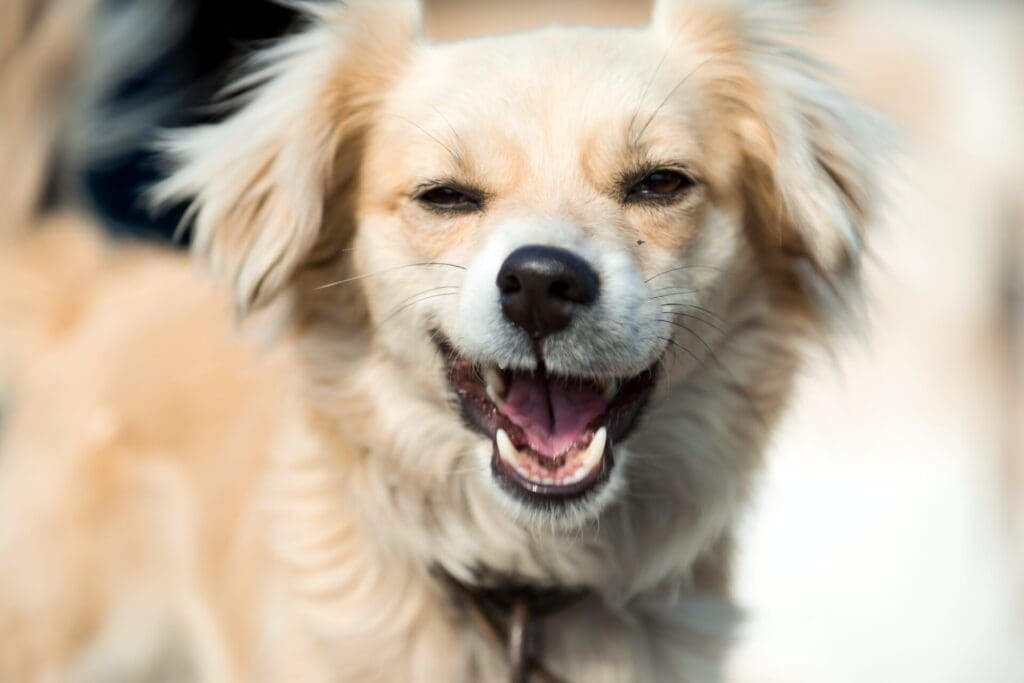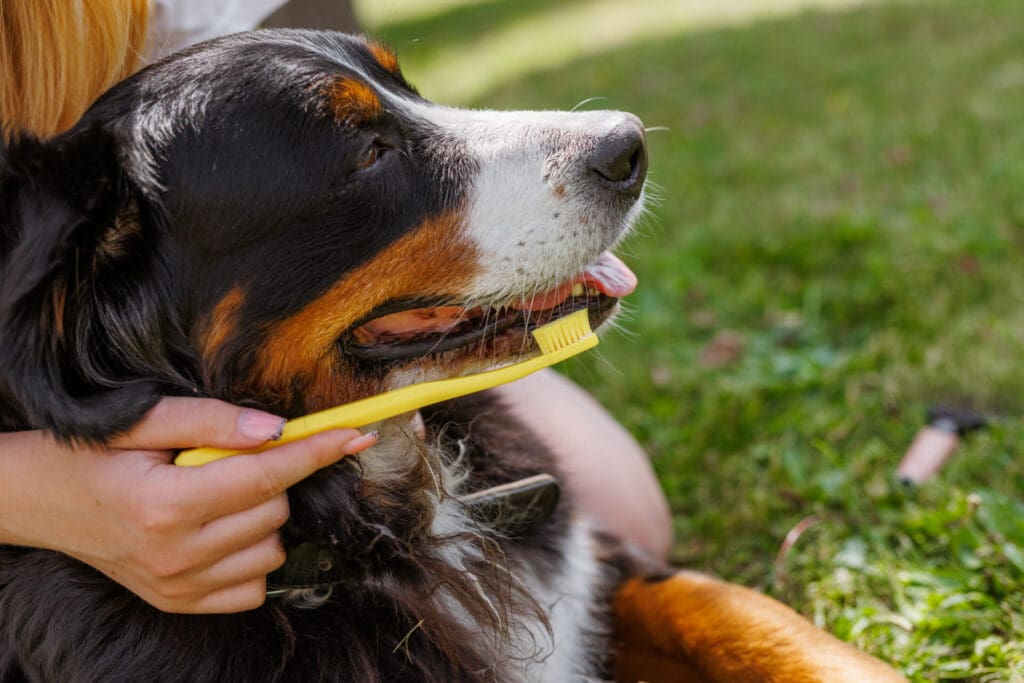Your dog’s grin isn’t just adorable—it’s also a window into their overall health. At our Kelowna veterinary clinic, Spall & Harvey Animal Hospital, we believe a happy pup starts with a healthy mouth. That’s why dog tooth cleaning is more than a cosmetic concern—it’s a cornerstone of preventive health care. This ultimate guide covers everything you need to know to keep your dog’s smile bright and their breath fresh.
A Healthy Smile Means a Healthier Dog
When it comes to your dog’s well-being, dog dental care is just as vital as a nutritious diet and daily walks. Poor oral hygiene can lead to bad dog breath, gum disease, pain, tooth loss, and even systemic illnesses affecting the heart, liver, and kidneys.Without routine dog tooth cleaning, plaque and tartar build up quickly, causing inflammation and infection in the gums. Over time, this can have lasting consequences on your pet’s health and comfort.

Early Warning Signs You Shouldn’t Ignore
Dogs are experts at hiding discomfort, but dental issues often reveal themselves in subtle ways. Recognizing these signs early can make all the difference:
- Persistent bad breath in dogs
- Red, swollen, or bleeding gums
- Difficulty chewing or sudden food aversion
- Excessive drooling
- Visible dog tartar removal need (yellow or brown buildup on teeth)
- Pawing at the mouth or unusual facial swelling
If you notice any of these symptoms, schedule a professional dog tooth cleaning with your veterinarian immediately.
Inside a Professional Dog Teeth Cleaning Appointment
Worried about what happens during a vet visit? Here’s how we approach dog teeth cleaning at Spall & Harvey Animal Hospital, proudly serving Kelowna, with care that’s safe, thorough, and pet-friendly:
- Pre-Cleaning Exam – We assess your dog’s overall health and dental condition.
- Anesthesia – To ensure comfort and precision, cleanings are done under general anesthesia.
- Scaling and Polishing – We remove plaque and tartar above and below the gum line.
- Dental X-Rays – To check for issues beneath the surface.
- Treatment or Extractions – If necessary, we perform any dental repairs or remove damaged teeth.
Professional dog tooth cleaning is not only effective—it’s essential for reaching the areas your toothbrush can’t.

Plaque, Tartar, and Gum Disease—What’s Really Going On?
Understanding what’s happening in your dog’s mouth helps you make better choices about their oral care. The buildup of plaque and tartar, along with the progression to gum disease, is a gradual process that can have serious health implications for your furry friend. Here’s a closer look at the stages of dental decay:
Plaque: The Starting Point of Dental Trouble
Plaque is a soft, sticky film of bacteria and food particles that constantly forms on your dog’s teeth. It’s invisible to the naked eye at first, but it’s always there, collecting on both the surface of the teeth and along the gum line. The bacteria in plaque feed on sugars and carbohydrates, producing acids that can gradually erode tooth enamel and irritate the gums.
If left unchecked, this buildup can lead to inflammation and infection, eventually causing more severe dental issues. Plaque removal is critical because it forms the foundation for tartar and gum disease. That’s where regular dog tooth cleaning comes in—it removes plaque from the surfaces of your dog’s teeth, preventing it from hardening into tartar.
Tartar: When Plaque Hardens and Sticks
Over time, if plaque isn’t removed, it hardens and turns into tartar (also called calculus). Unlike plaque, tartar is much harder and can’t be cleaned away with regular brushing. It bonds strongly to the tooth enamel, especially near the gum line, and often has a yellow or brown appearance.
Once tartar has formed, it can’t be removed by home brushing alone. Professional dog teeth cleaning is required to remove it, as the hardened tartar has a tendency to scrape against the gums, causing irritation and inflammation. Tartar buildup also makes it easier for new plaque to form, creating a cycle that only worsens without intervention.
Gingivitis: Early Signs of Gum Disease
Gingivitis is the first stage of gum disease and is caused by the presence of plaque and tartar near the gum line. This inflammation of the gums leads to redness, swelling, and bleeding, especially when your dog eats or when you try to brush their teeth. The gums may appear swollen, and you may notice a bad odor coming from their mouth—often a result of bacterial activity in the plaque.
While gingivitis is reversible with regular professional tooth cleaning and proper at-home care, it’s essential to catch it early. Left untreated, it can progress to more severe forms of gum disease, causing more pain for your dog and requiring more intensive treatments.
Periodontal Disease: Advanced Gum Disease
If gingivitis is ignored or left untreated, it can develop into periodontal disease—the most serious stage of gum disease. In this phase, the infection moves deeper into the tissues surrounding the teeth, causing significant damage to the bone and ligaments that support your dog’s teeth.
Periodontal disease can lead to tooth loss and severe pain, and it can even affect other parts of your dog’s body. The bacteria from gum disease can enter the bloodstream and travel to vital organs, potentially causing heart, liver, or kidney problems. This is why treating dental disease is not just about maintaining a fresh-smelling mouth; it’s essential for your dog’s overall health.
Symptoms of periodontal disease can include:
- Severe bad dog breath
- Tooth mobility or loose teeth
- Extreme pain when chewing
- Excessive drooling or blood in saliva
- Swelling or redness around the gums
The Importance of Regular Dog Tooth Cleaning
Daily care and regular professional dog tooth cleaning can halt the progression of plaque buildup and gum disease before they reach the point of tartar formation and periodontal disease. By brushing your dog’s teeth regularly and scheduling professional cleanings at least once a year, you can dramatically reduce the risk of these issues. Tooth brushing is your first line of defense against plaque, but professional cleanings are necessary to ensure deep cleaning and thorough removal of tartar that you can’t reach at home.
The Ideal Frequency for Professional Cleanings
So, how often should your dog’s teeth be professionally cleaned? It depends on their age, breed, and oral health history. However, most dogs benefit from a tooth cleaning once per year. Proactive dental care will not only keep your dog’s mouth fresh but also help prevent serious health complications in the future, making it one of the best investments in their well-being.
Smaller breeds and senior dogs may need more frequent cleanings. At Spall & Harvey Animal Hospital, we offer customized dog dental plans based on your pet’s needs to keep things simple and stress-free.
Vet-Approved Products to Help Between Visits
While professional cleanings are crucial, maintaining oral health at home plays a supporting role. But not all products are equal. Stick with vet-approved options that work, such as:
Top At-Home Dental Tools:
- Enzymatic Toothpaste – Specially made for brushing dogs teeth, these fight plaque without foaming.
- Soft-Bristled Dog Toothbrush – Designed for comfort and safety.
- Water Additives – Help reduce bacteria with every sip.
- The Best Dog Dental Chews – Look for VOHC-approved options that reduce plaque and tartar buildup.
- Dental Wipes – A quick option when brushing isn’t possible.
Remember: Dog tooth brushing should never involve human toothpaste, and treats should never replace professional dog tooth cleaning.

Final Tips for a Lifetime of Healthy Dog Teeth
Maintaining your dog’s dental health is a partnership between you and your vet. Here’s how to keep that tail wagging:
- Schedule regular teeth cleaning at a veterinary clinic.
- Make brushing teeth a routine from an early age.
- Use approved products—not home remedies.
- Don’t wait for bad breath in dogs to become unbearable before taking action.
- Stay on top of yearly dental checkups.
Your Dog Deserves a Healthy, Pain-Free Smile

At Spall & Harvey Animal Hospital, we’re committed to making dog tooth cleaning comfortable, effective, and fear-free. Don’t let dental disease sneak up on your pet. Whether your pup is due for a routine cleaning or needs a little extra TLC, we’re here to help.
Ready to book a professional cleaning? Contact Spall & Harvey Animal Hospital and give your dog the healthy mouth they deserve—because a clean smile means a happy life.

